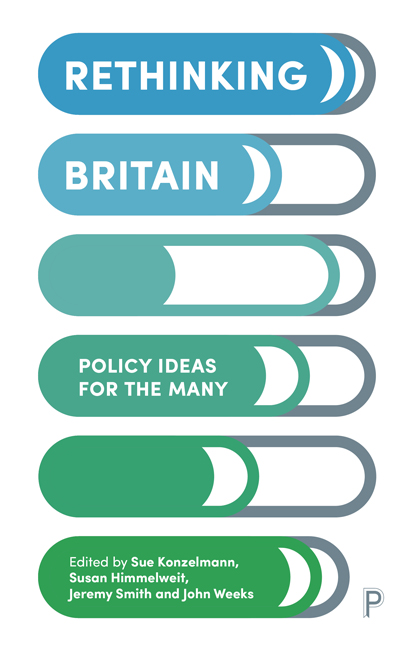Book contents
- Frontmatter
- Contents
- List of Tables and Figures
- The Contributors
- Foreword
- Introduction
- Interlude: ‘Mirror, Mirror, On the Wall – Who has the Highest Debt of All?’
- Part One Building a Full-Employment Economy: Introduction
- Part Two Public Investment – Prioritising Society Rather than Profit: Introduction
- Part Three Making Finance Work for Society: Introduction
- Part Four Genuine Social Security: Introduction
- Part Five How to provide for Social Needs: Introduction
- Conclusion
- Jargon Busters
- References and Further Reading
- Index
6 - Investing in Social Infrastructure
Published online by Cambridge University Press: 11 March 2021
- Frontmatter
- Contents
- List of Tables and Figures
- The Contributors
- Foreword
- Introduction
- Interlude: ‘Mirror, Mirror, On the Wall – Who has the Highest Debt of All?’
- Part One Building a Full-Employment Economy: Introduction
- Part Two Public Investment – Prioritising Society Rather than Profit: Introduction
- Part Three Making Finance Work for Society: Introduction
- Part Four Genuine Social Security: Introduction
- Part Five How to provide for Social Needs: Introduction
- Conclusion
- Jargon Busters
- References and Further Reading
- Index
Summary
What's the issue?
Spending on high-quality public services is one of the best investments that a society can make. With access to such services, children grow up to be better educated, more productive and more contented citizens. Effective public services also boost wellbeing and reduce suffering among adults, preventing a greater need for spending on services in the future. All these are reasons for seeing judicious spending on public services as a worthwhile investment.
Public services, such as education, childcare, health and social care, are also the core of a country's social infrastructure, benefiting the whole society, not only those who are currently using those services. The care system, for example, should be seen as part of our social infrastructure because we all benefit from knowing that proper care will be there for us when we need it. We can also contribute better to society when we are less concerned as to whether those for whom we feel responsible are receiving good quality care.
However, when the government talks of investing in infrastructure, it means spending to build physical infrastructure, power stations, roads or railways, for example. When the aim is to stimulate the economy, investing in social infrastructure is rarely considered, even though it is particularly good at generating new employment opportunities. This bias is not only short-sighted, denying us investment in vital public services; it also increases gender inequalities. The extra jobs generated by constructing physical infrastructure are largely filled by men, whereas the jobs created by investment in social infrastructure are more likely to be filled by women.
How can investment in social infrastructure benefit us all and reduce gender inequalities?
Analysis
‘Investment’ means spending money now on producing benefits for the future. Any government spending can stimulate the economy, but it is usually investment spending that is proposed when a stimulus is wanted. In that way the economy gains in two ways: from the longer-term benefits that the investment was designed to provide and from higher levels of employment and better use of resources now.
- Type
- Chapter
- Information
- Rethinking BritainPolicy Ideas for the Many, pp. 84 - 88Publisher: Bristol University PressPrint publication year: 2019



